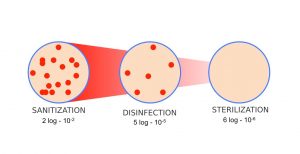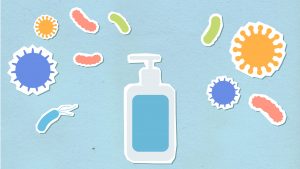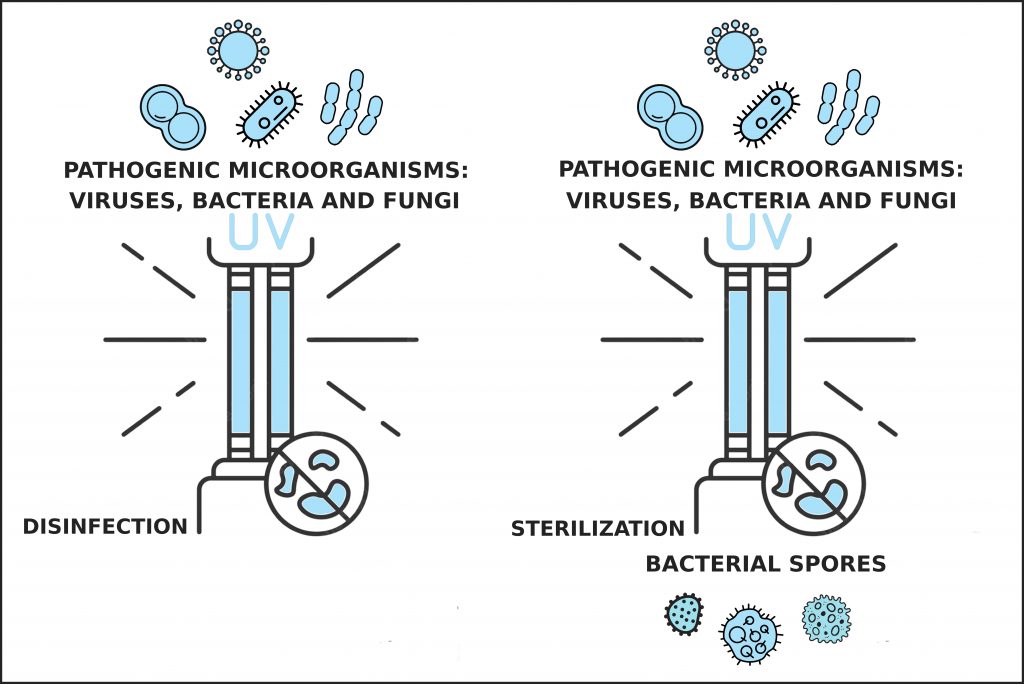When we talk about hygiene and cleanliness, it is common to hear the terms disinfection and sterilization, and even more so in the wake of the 2020 pandemic. But, do we know exactly about what each means? Do we know the difference? Don’t worry, from Germiled we help you to understand what these concepts are and their main differences, thus avoiding your doubts when choosing the most appropriate technique to maintain a correct hygiene of the spaces.
Disinfect: means to reduce the number of pathogenic micro-organisms on a surface or object. Disinfection is a term used to mean that something is capable of eliminating all micro-organisms that could cause illness or put our health at risk, i.e., primary pathogens; but they do not manage to combat forms of resistance such as bacterial spores, this is achieved through sterilization.
Sterilization: is a term that goes further, it encompasses the elimination of all forms of life, and what this means is that sometimes micro-organisms, as a defense mechanism, protect themselves by forming spores and thus ensure their survival, being able to evade disinfection methods. Therefore, it is defined as any process with the capacity to inactivate all micro-organisms.
The main objective of sterilization is to prevent micro-organisms from causing infection to people who have been in contact with them. In practice, it is very difficult to prove that all forms of life have been eliminated from a medium or object, so sterilization is considered when the probability of finding a living micro-organism is <10 -6.
The sterilization process is also conditioned by the characteristics of the micro-organism to be destroyed. There are some viruses, bacteria and fungi that are very resistant as mentioned above, and will require more aggressive conditions for their elimination. The fewer micro-organisms present in the medium, the more effective the sterilization will be in less time.

There are different methods to achieve sterilization:
– Physical agents, including dry heat, moist heat, filtration, ionizing radiation and ultraviolet radiation.
– Chemical agents, including sodium hypochlorite commonly known as bleach, ozone, hydrogen peroxide and alkylating agents such as ethylene oxide, among others. They are good, but many of them are toxic and release particles into the environment.
If we are talking about ultraviolet radiation, as it is a physical method with little penetration, in order to achieve correct sterilization, it is essential to clean the space or surface beforehand. Through a mechanical process, visible dirt and organic matter is removed by dragging, reducing the number of microorganisms and avoiding the formation of shadows so that the ultraviolet light can act.
Automatic reprocessing using ultraviolet light disinfection and sterilization equipment minimizes human error and does not require special ventilation systems.
In addition, sterilization and disinfection with ultraviolet light should be used in the absence of people and pets. Their effects are limited to the superficial tissues: epidermis and conjunctiva of the eye, although if used correctly they do not pose any danger. The advantage is that it does not release any chemical residues into the air or water, although care must be taken because some lamps do not filter the corresponding wavelength and can generate ozone. However, this is not the case with the Germiled models, as these germicidal lamps are designed to prevent the emission of ozone.
Cleaning, disinfection and sterilization are key processes to prevent the spread of diseases. If you have any questions, please do not hesitate to contact us, we will help you.


